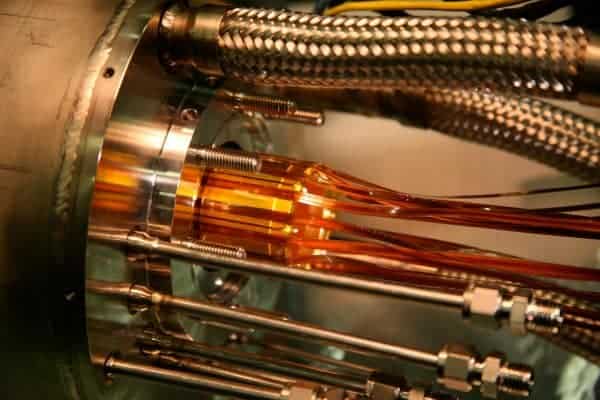
Physicists at CERN in Geneva are the first to capture and store atoms of antimatter for long enough to study its properties in detail. Working at the lab’s ALPHA experiment, the team managed to trap 38 anti-hydrogen atoms for about 170 ms. The next step for the researchers is to measure the energy spectrum of the atoms, which could provide important clues as to why there is much more matter than antimatter in the universe.
Antihydrogen is the antimatter version of the hydrogen atom and comprises a positron – or antielectron – and an antiproton. According to the Standard Model of particle physics, the energy levels of antihydrogen should be identical to those of hydrogen. Any deviations from this could help physicists identify new physics – and explain why there is much more matter than antimatter in the universe.
Although creating positrons and antiprotons is relatively easy, making antihydrogen is much harder. This form of antimatter was not isolated until 1995 – also in experiments at CERN. Making it stick around for long enough to study in detail is even more difficult. But in being able to trap antihydrogen atoms for 170 ms, the members of ALPHA, who come from 14 institutions in seven different nations, can now look forward to studying its atomic energy levels.
Colliding clouds
The experiment begins by making a cloud of positrons and a cloud of antiprotons. The antiprotons are created in an accelerator by smashing high-energy protons into a stationary target. The antiprotons are then slowed down and cooled in a series of steps involving a storage ring and electromagnetic traps. The positrons are produced by a radioactive source and then accumulated and cooled in a special trap.
The clouds are injected into a superconducting magnetic trap, where they mix for about 1 s to create antihydrogen. The charged positrons and antiprotons are then ejected from the trap, leaving behind neutral antihydrogen. While most of this antihydrogen is moving too quickly to be trapped, atoms with very little kinetic energy are held by a magnetic field gradient.
ALPHA researchers then detected the atoms by switching off the trap and setting the antihydrogen free to annihilate with surrounding matter. This created several charged particles including pions, which were spotted by a bank of detectors surrounding the trap. In total, the team has managed to see 38 annihilation events that are consistent with the release of antihydrogen that had been trapped for 170 ms.
Looking for CPT violation
The next step for the researchers is to use the antihydrogen to study a fundamental quantum transformation known as the charge-parity-time (CPT) operation. When the CPT transformation is applied to a physical system, three things happen: every particle is converted to its antiparticle; each spatial co-ordinate is reflected so that left becomes right, up becomes down and forward becomes backward; and time is reversed.
There is currently no experimental evidence that the CPT symmetry is violated, but it could show up as a slight difference in the frequency of certain atomic transitions in hydrogen and antihydrogen atoms. The discovery of such a violation could also help physicists understand why there is much more matter than antimatter in the universe.
“For reasons that no one yet understands, nature ruled out antimatter. It is thus very rewarding, and a bit overwhelming, to look at the ALPHA device and know that it contains stable, neutral atoms of antimatter,” said ALPHA spokesperson Jeffrey Hangst of Aarhus University in Denmark. “This inspires us to work that much harder to see if antimatter holds some secret.”
The work is described in Nature doi:10.1038/nature09610.



